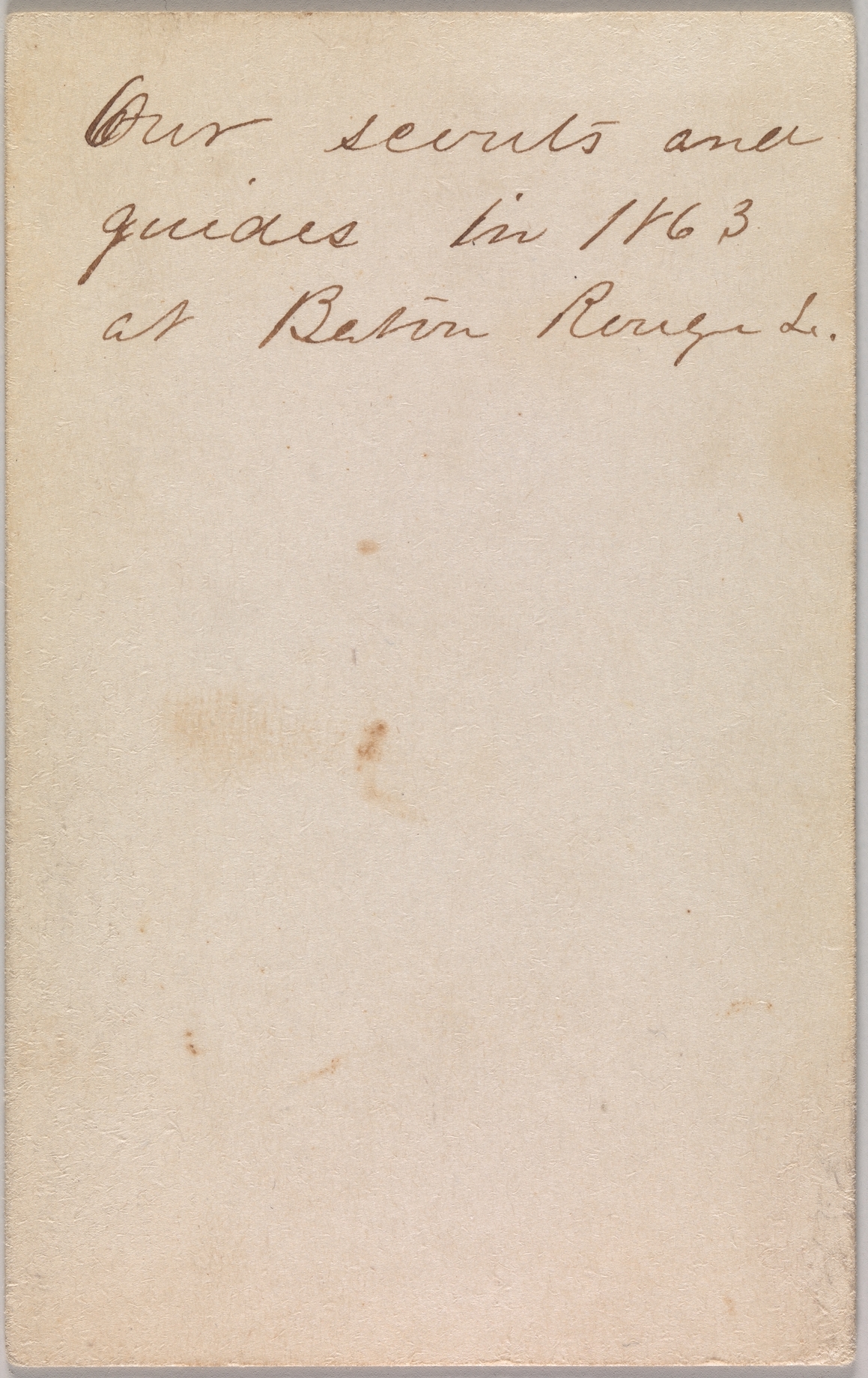Our Scouts and Guides in 1863 at Baton Rouge, Louisiana
Attributed to McPherson & Oliver American
Not on view
At war’s start, Lincoln did not want to arm free men of color or former or runaway slaves in the war effort. Eventually, his military strategists and prominent abolitionists persuaded him to accept the enlistment of African American soldiers. By late 1863 some 37,000 had enlisted in the Union army, in fifty-eight segregated regiments known as the United States Colored Troops. Another 3,200 served in the Union navy on fully integrated warships. This portrait of two former slaves employed as Union army guides and scouts was made in a picture tent at an encampment along the Mississippi River.
Due to rights restrictions, this image cannot be enlarged, viewed at full screen, or downloaded.
This artwork is meant to be viewed from right to left. Scroll left to view more.



